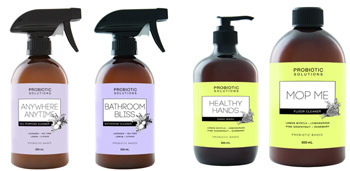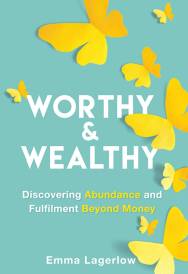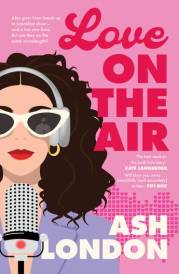Michelle Perkins How Toxic Is Your Home Interview

Michelle Perkins How Toxic Is Your Home Interview
Australians who use regular cleaning products are unwittingly putting themselves, their families and pets at risk when they could be transforming their homes into healthy eco-systems by introducing friendly probiotic bacteria.
With an average home consisting of 8000 different types of bacteria, Australia's only Certified Organic cleaning brand, Probiotic Solutions is the healthy, safer alternative to conventional cleaning products.
Utilising world-leading probiotic technology, this Australian-made and owned product adopts nature's own cleaning methods by applying a barrier of beneficial bacteria that neutralises harmful bacteria within the home, making families less susceptible to infection and disease.
The probiotics in Probiotic Solutions effectively clean surfaces, attack and kill harmful bacteria and create a barrier of healthy bacteria which continue to attack the microbes that cause harm to humans and pets.
"When most people think of bacteria they automatically think of germs and infection, but not all bacteria are bad," says Michelle Perkins, Director of Probiotic Solutions.
"Popular cleaning products operate on a scorched-earth policy, targeting 99.9% of bacteria. They kill most germs on the surface they're applied to, but they only work while the surface is wet. Once the surface is dry, the airborne harmful bacteria you're trying to remove returns," Mrs Perkins says.
"Just like probiotic drinks and tablets that keep your stomach healthy, Probiotic Solutions keeps cleaning long after it's applied, encouraging healthy bacteria in your home so bad bacteria cannot flourish and put you and your family's health at risk.
'It is particularly important for new mothers to use as it reduces the chances of their baby getting sick and our good bacteria will support the infant's immune system. That is great peace of mind.
'Seniors and people who are convalescing from sickness will also benefit from introducing this safe, probiotic bacteria into their homes."
Probiotic Solutions are naturally formulated using bio-ingredients, including antioxidants, vitamins and other beneficial compounds along with non-synthetic essential oils which leave the home smelling fragrant and fresh while working hard to make it a healthier environment. These chemical-free products are family and kid-friendly and they promote good health in all mammals, including pets.
The Probiotic Solutions Range contains:
Anywhere Anytime: 100% natural, all-purpose spray infused with lemon myrtle and lemon grass non-synthetic essential oils.
Bathroom Bliss: Every day cleaner that's infused with Organic Tea Tree and Lavender essential oils, and is designed to tackle wet areas and discourage mould.
Mop Me: Highly concentrated floor cleaner with a blend of grapefruit and patchouli, leaving the house smelling fresh and floors shining.
Healthy Hands: Non-allergic and synthetic free hand wash, leaving your hands protected and smelling fresh all day.
For more information visit, http://www.ewg.org/guides/cleaners
Probiotics are available online at www.probioticsolutions.com.au and selected independent stores.
Interview with Michelle Perkins, Director of Probiotic Solutions
Question: How do cleaning products put our bodies at risk?
Michelle Perkins: Cleaning products generally include "active ingredients" which are usually antimicrobial pesticides added to kill bacteria, viruses or moulds. Avoid them – they're hazardous chemicals, and you rarely need them to get your house clean. Many common dish and hand washing soaps contain the pesticide triclosan. They don't clean any better than plain soap and water or provide extra protection against illness. But they do wash down the drain, where they are often toxic to aquatic algae, fish and wildlife. Overuse of products containing pesticides can promote development of bacteria that are resistant to antibiotics, and that does endanger our health.
Question: How does mould and dust affect our health?
Michelle Perkins: They increase our risk of respiratory disease and asthma and in some instances allergic reactions.
Mould accumulates in damp and poorly ventilated buildings. Inhaling mould fragments or spores can inflame the airways, causing nasal congestion, wheezing, chest tightness, coughing and throat irritation.
Prolonged exposure to high levels of indoor dampness can reduce lung function and cause chronic health problems such as asthma. Those who already suffer from asthma and allergies are more likely to have more severe symptoms when exposed.
According to the World Health Organization (WHO), a considerable proportion of the world's 300 million cases of childhood asthma is attributable to exposure to indoor dampness and mould.
People who live in damp and mouldy homes are also at increased risk of depression which, in turn, may increase the risk of respiratory symptoms and asthma.
 It's more the dust mites than dust that is the problem with "dust".
It's more the dust mites than dust that is the problem with "dust".
Dust mites are microscopic, insect-like pests that generate some of the most common indoor substances"or allergens"that can trigger allergic reactions and asthma in many people. Hundreds of thousands of dust mites can live in the bedding, mattresses, upholstered furniture, carpets or curtains of your home. They feed on the dead human skin cells found in dust.
Dust mites are not parasites; they don't bite, sting or burrow into our bodies. The harmful allergen they create comes from their fecal pellets and body fragments. Dust mites are virtually everywhere.
Mites are one of the major indoor triggers for people with allergies and asthma. Dust mite exposure can even cause asthma.
Question: Can you talk through the difference of good and bad bacteria?
Michelle Perkins: Good Bacteria
Certain bacteria are safe in food and actually produce its desired taste and texture. For instance, bacteria are commonly used in dairy products such as yogurt and fermented milk. Fermented milk products help people with lactose intolerance digest dairy products that otherwise would cause cramps and diarrhoea. The different flavor of fermented dairy products is due to the bacteria used to make them.
Some bacteria, such as Lactobacillus rhamnosus, have been shown to enhance the immune system by regulation and stimulation. They also may form a barrier to help protect us from bad bacteria by altering the pH or acidity level or by releasing toxins that harm the bad bacteria.
Bad Bacteria
Pathogenic or bad bacteria produce results ranging in severity from food poisoning or toothache to death, according to the Virtual Museum of Bacteria. Some bacteria such as salmonella may cause a brief bout with stomach ache or diarrhoea and may in some cases lead to death. Others cause diseases such as anthrax that are so severe they have been used by bioterrorists.
Generally, most bacteria are harmless to humans and some are beneficial. Mutually beneficial or symbiotic bacteria not only help you with digestion but also help produce vitamins and protect you against bad bacteria. When you take antibiotics for illness, both bad and good bacteria are killed. Your cure is not complete until your friendly bacteria are replaced.
Other benefits of bacteria include decomposing dead plants and animals, producing oxygen, controlling plant pests and making nitrogen from the air available as food for plants that produce essential nutrients for humans. Bacteria help to sustain life for humans.
Question: What types of cleaning products should we be using?
Michelle Perkins: Non-toxic, safe for humans, animals and the environment cleaners. If it's causing you irritation or discomfort (itchy nose or eyes, red skin) ditch it!
Question: How does Probiotic Solutions safety provide an alternative to cleaning products?
Michelle Perkins: Probiotic Solutions cleaners are 100% non-toxic, non-irritating and safe for you and the environment. The range uses a probiotic base which cuts through grease and grime and the bacteria left behind on the surface discourage the growth of bad bacteria.
Question: How do Probiotic Solutions products protect our pets whilst also reducing dirt and dust?
Michelle Perkins: Pets are also affected by chemicals in cleaning products so our non-toxic range is also healthy for them. Cleaning regularly with our products will reduce dirt and dust but not impact the health of your pet.
Question: What are the different ingredients in Probiotic Solutions products?
Michelle Perkins: Proprietary Mother Culture (Bacillus subtilis, Bifidobacteriumanimalis, Bifidobacteriumbifidum, Bifidobacteriumlongum, Lactobacillus acidophilus, Lactobacillus casei, Lactobacillus delbrueckii subsp.bulgaricus (Synonym: Lactobacillus bulgaricus), Lactobacillus fermentum, Lactobacillus plantarum, Lactococcus lactis subsp. Lactis ( Synonym: Streptococcus lactis), Rhodopseudomonaspalustris, Saccharomyces cerevisiae).
Question: Why is Probiotic Solutions products particular good for pregnant women?
Michelle Perkins: Our products are free from chemicals - they contain only probiotic bacteria and essential oils - we list our ingredients on the label. When using our products you know that there is no risk of any unintended side effects.
Interview by Brooke Hunter
MORE



